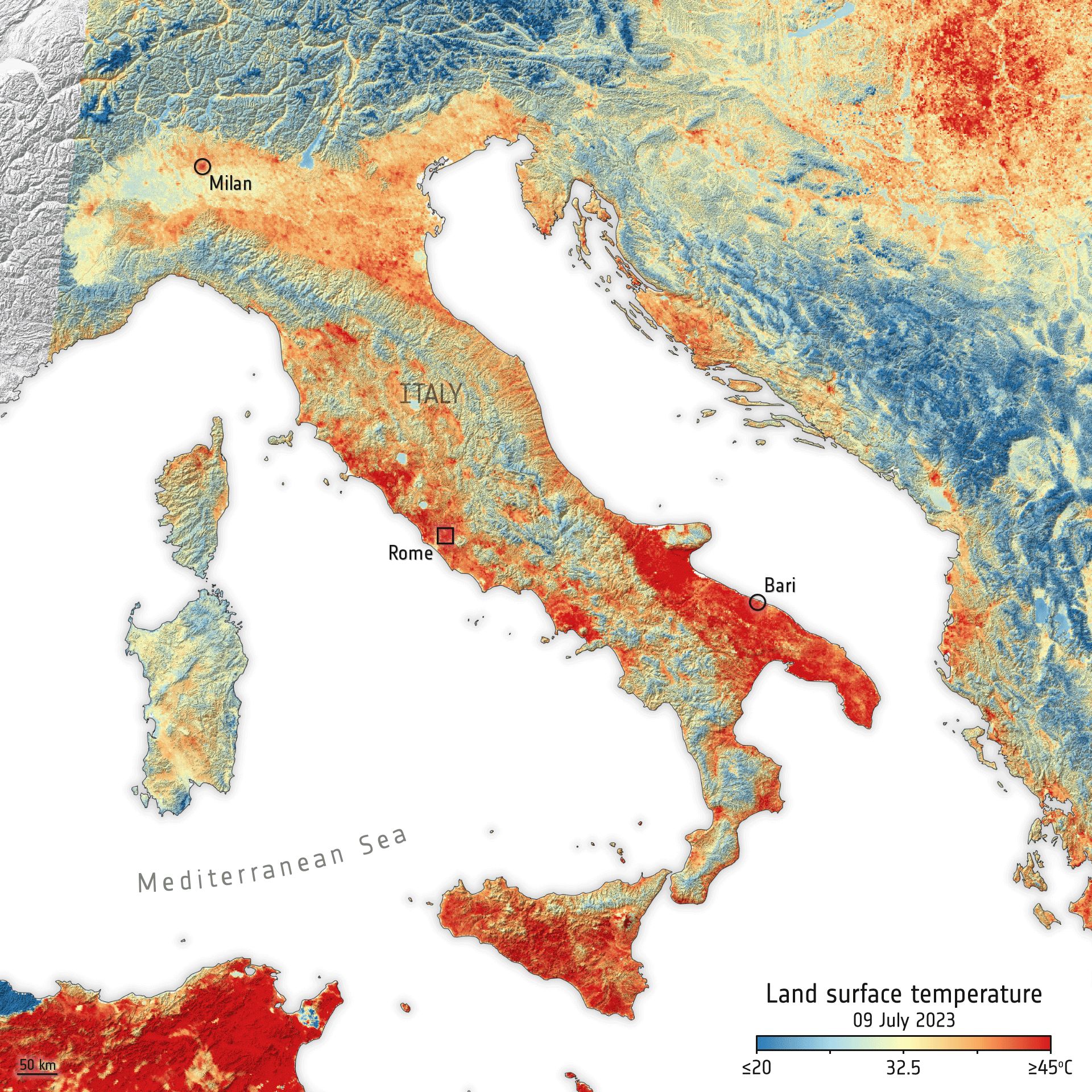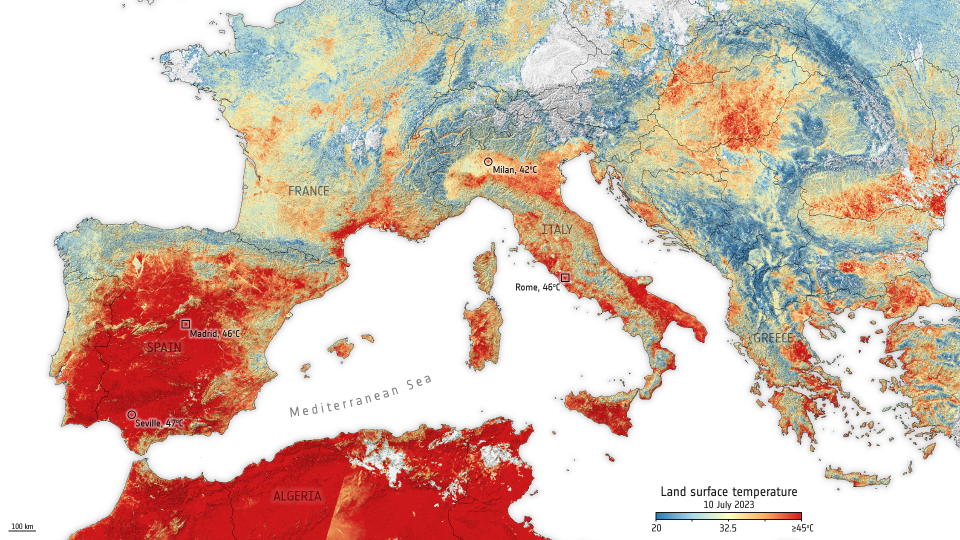Published on 13 July 2023
An anticyclone – a high-pressure area – named Cerberus (named after the monster from Dante’s Inferno) coming from the south will cause temperatures to rise above 40°C across much of Italy. This comes after a spring and early summer full of storms and floods.
The highest temperature in European history was broken on 11 August 2021, when a temperature of 48.8°C was recorded in Floridia, an Italian town in the Sicilian province of Syracuse. That record may be broken again in the coming days.
The animation below uses data from the Copernicus Sentinel-3 mission’s radiometer instrument and shows the land surface temperature across Italy between 9 and 10 July. As the image clearly shows, in some cities the surface of the land exceeded 45°C, including Rome, Naples, Taranto and Foggia. Along the east slopes of Mount Etna in Sicily, many temperatures were recorded as over 50°C.

Land-surface temperature in Italy. This animation was created using data from the Copernicus Sentinel-3 mission's radiometer instrument and shows the land-surface temperature across Italy on 9-10 July 2023.
Considering Copernicus Sentinel-3 acquired these data in the late-morning (11:30 CEST), the temperature would have continued to increase through the afternoon.
While weather forecasts use predicted air temperatures, this satellite instrument measures the real amount of energy radiating from Earth – and depicts the temperature of the land surface. Therefore, the map shows the actual temperature of the land’s surface which is significantly hotter than air temperatures.
Scientists monitor land surface temperature to better understand and forecast weather and climate patterns as well as monitor fires. These measurements are also particularly important for farmers optimising the irrigation of their crops and for urban planners looking to improve heat mitigating strategies.
The heatwave is also hitting other cities across Europe with air temperatures expected to reach 44°C in parts of Spain later this week. A wider view of Europe can be seen in the image below. Land surface temperatures hit 46°C in Rome, Italy, while Madrid and Seville in Spain reached 46 and 47°C, respectively.

Heatwave across Europe
click here to view the image at full resolution
“Climate warming amplified this year by El Niño severely affects food production, water availability as well as our health. To properly adapt to these changes we need timely information at actionable resolution which the Copernicus programme is providing with Sentinel-3 and soon with the Copernicus Land Surface Temperature Monitoring mission at 50 m resolution,” commented Benjamin Koetz, Mission Scientist of the Land Surface Temperature Monitoring mission.
The extreme temperatures in Europe follow record-shattering global temperatures. On Monday, the World Meteorological Organization stated that the planet saw the hottest few days on record in first few days of July.
This follows the hottest June on record, with unprecedented sea surface temperatures and record low Antarctic sea ice extent. According to a report from the Copernicus Climate Change Service, June 2023 was just over the 0.5°C above the 1991-2020 average.
This heat coincides with the onset of El Niño, the natural phenomenon warming the Pacific Ocean. It is expected that the global temperature will rise further and more weather records will be broken.
According to a study recently published in Nature Medicine, more than 60 000 people died because of last year’s summer heatwaves across Europe. The mortality rate was highest in Italy, Greece, Spain and Portugal. This summer is likely to be worse. The Red Cross has urged locals and tourists to exercise extreme caution and pay attention to those most vulnerable to the high temperatures.
Source:
European Space Agency. (2023c, July 13). Europe braces for sweltering July. Observing the Earth.